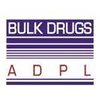Filter interviews by
Uni Medicolabs Officer Interview Questions and Answers
Uni Medicolabs Officer Interview Experiences
1 interview found
I appeared for an interview before Aug 2020.
(1 Question)
- Q1. As per your Previous Experience .
Top trending discussions






Interview questions from similar companies

Interview Questionnaire
4 Questions
- Q1. Basic knowledge of chemistry subject
- Q2. What is ph and it's range
- Ans.
pH is a measure of acidity or alkalinity in a solution, ranging from 0 to 14.
pH stands for 'potential of hydrogen'
It measures the concentration of hydrogen ions in a solution
A pH of 7 is considered neutral, below 7 is acidic, and above 7 is alkaline
The pH scale is logarithmic, meaning each unit represents a tenfold difference in acidity or alkalinity
Examples: lemon juice has a pH of around 2, water has a pH of 7, and b...
- Q3. What is titrations
- Ans.
Titrations is a laboratory technique used to determine the concentration of a substance in a solution.
It involves adding a known amount of a solution of known concentration to a solution of unknown concentration until a reaction is complete.
The point at which the reaction is complete is called the endpoint.
The amount of the known solution added is used to calculate the concentration of the unknown solution.
Titrations c...
- Q4. Some name of acid and base
- Ans.
Acid and base are chemical substances that have opposite properties and can react with each other.
Acid: hydrochloric acid (HCl), sulfuric acid (H2SO4), acetic acid (CH3COOH)
Base: sodium hydroxide (NaOH), potassium hydroxide (KOH), calcium hydroxide (Ca(OH)2)
Interview Preparation Tips

I appeared for an interview in Jan 2023.
(1 Question)
- Q1. Working experience and previous company salary

Executive Interview Questions & Answers
Pharmaffiliates Analytics Syntheticsposted on 23 Jan 2021
I appeared for an interview before Jan 2020.
Interview Questionnaire
1 Question
- Q1. Basic chemistry questions and questions related to my job profile..organic synthesis and about general handling of chemicals and different reactions in lab.
Interview Preparation Tips

I applied via Referral and was interviewed before Feb 2023. There was 1 interview round.
(1 Question)
- Q1. Describe the APQR. OOS, Process Validation. And many more
- Ans.
APQR is a quality document that summarizes the results of an annual product quality review.
APQR stands for Annual Product Quality Review.
It is a quality document required by regulatory authorities.
APQR summarizes the results of an annual review of product quality.
It includes data on manufacturing processes, analytical results, complaints, deviations, and other quality-related information.
APQR helps identify trends, pot...
Interview Preparation Tips

(6 Questions)
- Q1. Why are you looking for a change?
- Q2. What are your salary expectations?
- Q3. What is your family background?
- Q4. Share details of your previous job.
- Q5. What are your strengths and weaknesses?
- Q6. Tell me about yourself.
(1 Question)
- Q1. Asked Questions based on work experience
Interview Preparation Tips

QA Executive Interview Questions & Answers
Steril Gene Life Sciencesposted on 3 Feb 2024
(2 Questions)
- Q1. What are all the in process carried out in oral solids
- Ans.
In the process of manufacturing oral solids, various steps are carried out to ensure quality and efficacy.
Raw material testing and selection
Granulation or blending of active ingredients and excipients
Compression or encapsulation of the mixture into tablets or capsules
Coating of tablets for protection and ease of swallowing
Packaging and labeling of the final product
Quality control testing at different stages
Documentatio...
- Q2. What are cleaning validation process
- Ans.
Cleaning validation process ensures that cleaning procedures effectively remove residues from equipment and surfaces.
Cleaning validation is a documented process to demonstrate that cleaning procedures are effective in removing residues.
It involves establishing acceptance criteria, selecting appropriate sampling methods, and performing analytical testing.
The process includes cleaning verification, which confirms that cl...
(1 Question)
- Q1. What is your positive and negative

Chemist Interview Questions & Answers
Steril Gene Life Sciencesposted on 24 Oct 2024
(1 Question)
- Q1. Tell me about yourself
- Ans.
I am a dedicated chemist with a passion for research and innovation, specializing in organic synthesis and analytical techniques.
Education: I hold a Ph.D. in Chemistry from XYZ University, focusing on organic chemistry.
Experience: I have 5 years of experience in pharmaceutical research, developing new drug formulations.
Skills: Proficient in techniques like NMR, HPLC, and mass spectrometry, which I used to analyze compo...

I applied via Walk-in and was interviewed in Nov 2023. There were 2 interview rounds.
(2 Questions)
- Q1. What is pH meter , How to calibrate pH meter
- Ans.
A pH meter is a scientific instrument used to measure the acidity or alkalinity of a substance. Calibration ensures accurate readings.
pH meter measures the concentration of hydrogen ions in a solution
Calibration involves adjusting the pH meter to known standard solutions
Regular calibration ensures accurate readings over time
- Q2. Explain the parts of HPLC
- Ans.
HPLC stands for High Performance Liquid Chromatography, which consists of a pump, injector, column, detector, and integrator.
HPLC involves a pump to push the liquid solvent through the system.
It includes an injector to introduce the sample into the mobile phase.
The column separates the components of the sample based on their interactions with the stationary phase.
A detector measures the amount of analyte in the eluent.
...
(2 Questions)
- Q1. What are the buffer used in HPLC
- Ans.
Buffers commonly used in HPLC include phosphate buffers, acetate buffers, and citrate buffers.
Phosphate buffers are commonly used in HPLC for separating acidic compounds.
Acetate buffers are used for separating basic compounds.
Citrate buffers are used for separating metal ions.
Other common buffers used in HPLC include ammonium acetate and ammonium formate.
- Q2. How to calibrate HPLC
- Ans.
HPLC calibration involves adjusting parameters to ensure accurate and reliable results.
Prepare standard solutions of known concentrations
Run the standard solutions through the HPLC system
Compare the results to expected values and adjust parameters as needed
Repeat the process until accurate and consistent results are obtained

(1 Question)
- Q1. Aptitude and technical round
(1 Question)
- Q1. It was good and questions about chemistry
Interview Preparation Tips
Uni Medicolabs Interview FAQs
Tell us how to improve this page.
Uni Medicolabs Interviews By Designations
Interview Questions for Popular Designations
Overall Interview Experience Rating
based on 3 interview experiences
Difficulty level
Duration
Interview Questions from Similar Companies
Uni Medicolabs Officer Reviews and Ratings
based on 5 reviews
Rating in categories
|
Chemist
23
salaries
| ₹1.2 L/yr - ₹3 L/yr |
|
Officer
22
salaries
| ₹1.8 L/yr - ₹5.4 L/yr |
|
Executive
15
salaries
| ₹3.2 L/yr - ₹6.5 L/yr |
|
Assistant Manager
11
salaries
| ₹4.8 L/yr - ₹10 L/yr |
|
Chemist Quality Control
7
salaries
| ₹1.5 L/yr - ₹2.8 L/yr |

Novartis Healthcare

Aspiro Pharma

Bajaj Healthcare

Med Manor Organics
- Home >
- Interviews >
- Uni Medicolabs Interview Questions











